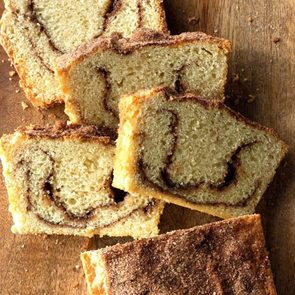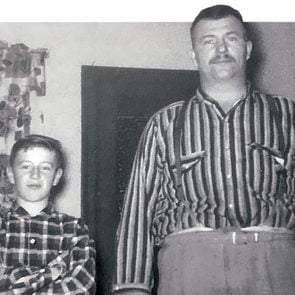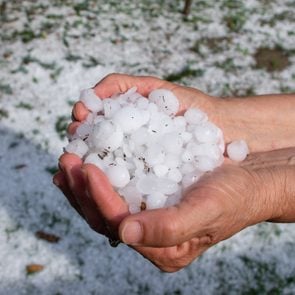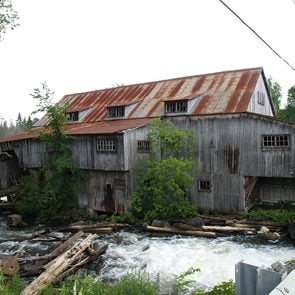Though you might feel the urge to feed birds bread and other convenience foods you happen to have handy, try to resist. Dishes humans consume are generally bad for birds in the same way that junk food is bad for our systems. “Malnutrition is certainly a risk if birds aren’t getting the food that they need,” says John Rowden, senior director for bird-friendly communities at Audubon. “They can be undernourished, which makes them more susceptible to disease, so it could cause health or lethal consequences.”
With that in mind, here’s a list of nine nibbles to avoid feeding your feathered friends.
What Not to Feed Wild Birds
Bread
Surprised to learn you shouldn’t feed bread to birds? It’s not that bread is inherently unhealthy; instead, bread causes birds to become full quickly, which means they may skip foods with actual nutritional value.
Raw Meat
It might seem like a good idea to set out raw meat as a winter treat, but it can go rancid and spoil—and attract unwanted guests. “As soon as you put raw meat out it starts to transform because it’s outside of a refrigerated environment,” John says.
Seeds and Nuts Sold for People
Sunflower seeds and legumes made for humans often have large amounts of salt. Birdseed is produced specifically for birds, leaving out the extra sodium. Or instead of shopping for birdseed, save time and money by growing native plants that produce fruit, seeds and nectar. Favourites include crabapple trees, sunflowers and salvia.
Bacon Fat
This fat is very salty, has additives and spoils easily. To make suet, get high-quality fat straight from the butcher, before it gets processed.
Potato Chips
While this popular snack is often called upon to cure the late-night munchies, just like when birds eat bread, it doesn’t provide proper nutrition.
Honey
You’d think birds could use the calories and sugar, but honey can grow mold in addition to becoming troublesome and sticky.
Red Food Colouring
There’s no need to add any food colouring to your hummingbird sugar water. The dye can be harmful and won’t attract more birds.
Old Birdseed
Serve fresh seed to ensure your backyard friends aren’t exposed to moldy or rancid food.
Pet Food
Dog and cat food lacks nutrition for birds and may attract mice, rats or other backyard pests.
In the end, it all comes down to mindset. “In their heart of hearts, people are trying to do the right thing, and what they want to do is help birds,” John says. “Great; we want to encourage that, it’s just finding the right foods.”
Next, find out how to attract birds to your back yard.
Growing up on a hobby farm in British Columbia, my sister, brother and I would be greeted after school by our mother, a long line of washing drying outside and the smell of fresh bread. If it had been raining, the wet clothes were hung inside in various parts of the house. The odour of bleach, bluing and wet cotton, combined with the smell of bread and cinnamon buns, both fresh-baked, was overwhelming. We’d hardly get our coats off before we’d cut huge chunks of warm bread, smearing them with butter and honey—the butter melting and the honey dripping. All the while my mother would be scolding us, reminding us to hang up our coats and not drip butter or honey on the clean floor.
I grew up coveting my mother’s fresh bread and, later, understanding its power in places far away. One year, our travels found us in a small hotel in Tuscany. Every day began with freshly baked bread and delicious pastries. Nonna, the resident grandmother, presided over the breakfast table. The hotel was actually her house, reimagined as a villa with three guest rooms and run by three generations of her family.
During our six-day stay, we were the only guests. Every morning after breakfast, Nonna would sit in the reception room, knitting all day and getting up each time we entered the room with a smile and a friendly greeting—“Buongiorno,” or “Buonanotte,” or “Grazie,“ or “Grazie mille.”
On our last day, as we came down the stairs to check out, Nonna stood up, smiled, said, “Buongiorno,” put down her knitting and walked over to the reception desk. She picked up a package and handed it to me. “For you,” she gestured, all smiles. It was a gift, beautifully wrapped in patterned white paper and tied with a red bow. I unwrapped the package to find a loaf of fresh bread, warm and fragrant with a hint of raisins. “Mille grazie, mille grazie,” I said over and over as my eyes welled up.
The memory of my mother’s homemade bread and Nonna’s gift of a freshly baked loaf still hold the power to make my eyes water.
Next, read a heartwarming story of how passing down family recipes is the greatest gift.
Every week, it seems there’s a new viral video showcasing a weird and wonderful way to save time, money and effort using ordinary items from around the house. Whether it’s from Reddit or Tiktok, we’ve recently learned how to shred cheese so nothing sticks to the box grater, and the best way to dice an onion without using a knife.
Now, breakfast is tasting even better thanks to this new Reddit hack.

What is the Ketchup Bottle Hack?
You might have seen a variation of this hack on morning television: Load your pancake batter into a plastic squeeze bottle, and use the bottle to dispense the perfect amount of batter into the hot pan, every time—no messy pouring from a batter bowl required! Instead of going out to buy a plastic squeeze bottle, however, why not just wash and re-use an empty plastic ketchup bottle? It’ll save you cash as well as clean-up time after breakfast is done. Plus, you can get creative by squirting the pancake batter into any shape you like!
@food__dPancake maker hack! Get a clean plastic ketchup bottle with squirty nozzle and you’re away ##foodhack ##pancake ##fyp ##breakfast ##hack♬ How Bad Can I Be? – Ed Helms
This hack comes to us via @food__d on TikTok. We’re never making pancakes the same way again!
You Can Use This Hack on the Go
It’s getting a little late in the season to go camping, but keep this ketchup bottle hack in your back pocket for next summer when you’re making breakfast around the campfire. This is also the perfect hack for saving any leftover batter—close the lid, pop the bottle in the fridge, and voila! Tomorrow’s breakfast made easy.
Next, check out 40 more kitchen hacks that save time, money and effort!
Around this time of year, one thing begins to enter the minds of Canadians across the country: Hockey. To help us all keep up-to-date with the hockey chatter—and decode those watercooler conversations—the experts at language learning app Babbel have created a guide to all the Canadian hockey slang you’ll need to survive the season.
Canadian Hockey Slang 101
Barn Burner
This is the kind of hockey game you dream about: one that’s packed with action, fast paced and high scoring.
Birdcage
Slang for the goalie’s mask, or a helmet with a cage protecting the face. Not to be confused with “Fish Bowls” which have a clear face mask.
Biscuit
The puck. It goes into the basket (the goal).
Can-Opener
When a player puts his stick between another player’s legs and twists.
Chiclets
Teeth, usually used to describe the lack thereof.
Chirp
Trash talk thrown at opponents (including players, the team bench or the referees) throughout a hockey game. Players will “chirp” others to try and throw off their opponent’s concentration.
Dangler
Refers to a player with slick puck-manoeuvring skills.
Drop the mitts/drop the gloves
The act of throwing off your gloves (or mitts) to get into a fight.
Dump and Chase
A tactic where players dump the puck into the opposition zone and then attack on a forecheck.
Flamingo
When a player is afraid to block a shot and lifts one leg up like a flamingo in order to avoid getting hit with the puck.
Gongshow
A chaotic situation during or after a game.
Gordie Howe Hat Trick
When a player registers a goal, an assist and a fight all in one game.
Heavy
Short form for “heavyweight,” used to describe a player who is an enforcer on a team or a designated fighter. Variations of this term include “Meathead” or “Cementhead.”
Hoser
Essentially, a loser. Originally referring to someone who syphons gasoline out of farm equipment with a hose. This common Canadian slang term also derives from a time when the losing team had to hose off the ice to make it smooth again for the next game.
Plumber
A player that loves to do all the dirty work in the corners. Although your average plumber might not be the most skilled player, they definitely work hard.
Pylon
A player who moves slowly on the ice, and can be easily skated around.
Sieve
A terrible goalie who lets many goals through.
Slewfoot
When a player kicks the legs out from behind an opponent. (A very dirty tactic.)
Tweeners/Five-hole
Scoring a goal between the goalie’s legs.
Want to learn more sports slang in your favourite languages? Try learning with Babbel!
Next, check out these hilarious stock hockey phrases non-fans will find useful.
Imagine singing “O’ Victorialand” or carrying a passport for “Efisga.” Although it seems bizarre today, these scenarios were possible at one point in history. Here’s how one moment changed the future of the country forever.
How did Canada get its name?
The name “Canada” has Indigenous roots and originally comes from the Huron-Iroquois word kanata meaning “village” or “settlement.” In 1535, French explorer Jacques Cartier was told about the route to Kanata by two Aboriginal youths who were referring to the village of Stadacona (presently the city of Québec). It’s believed that Cartier misheard or misunderstood what they had said and used “Canada” instead to describe the entire area. By 1547, maps had already begun referring to everything north of the St. Lawrence River as Canada.
“There has been lots of speculation about what exactly was said, but we’ll never know for sure because the people [Cartier came into contact with] and their language no longer exist per se,” says Allan Greer, professor of history and Canada research chair at McGill University.
The formation of a country
Canada wasn’t always made up of 10 provinces and three territories. “For the period of New France, and early British period, Canada corresponded only to what we would call now Quebec, and Ontario,” says Jean-François Lozier, a curator at the Canadian Museum of History who specializes in French North American history. “The idea that Canada might be the name of a country is a relatively new one.”
By the late 1850s, the joining of the British North American colonies had been in the air for a while. But it wasn’t until the Charlottetown Conference in 1864 that it gained momentum. According to the Canadian Encyclopedia, 36 representatives from the colonies—known collectively as the Fathers of Confederation—met to discuss the formation of a new nation. After several conferences, on July 1, 1867, the provinces of Ontario, Quebec, Nova Scotia, and New Brunswick all came together to form the Dominion of Canada.
The alternative names
What you might not know is that the name Canada was just one of many suggested by delegates at the conference leading up to confederation. Also on the list were Albertsland and Victorialand, which were proposed in honour of Queen Victoria and her late husband. Borealia, latin for “northern,” was a name inspired by the northern lights. More suggested names were Hochelaga, which came from the Iroquoian word meaning “beaver path” and Mesoplagia, used to describe the “land between the seas.” Other options included Norland, Cabotia, Superior, and the acronym Efisga, which stood for England, France, Scotland, Ireland, Germany, and Aborigines.
“Ultimately, Canada prevailed because it had the merits of already existing and already being used by the people that pushed the Confederation agenda,” says Lozier. “It [was also] short and sweet.”
Next, find out the fascinating story behind the provincial flowers of Canada.
No doubt you’ve experienced a bitter cucumber once or twice in your day. That unpleasant flavour can tempt you to toss the entire cuke in the compost right away. But what makes cucumbers bitter, and more importantly, if there’s no way of telling a tasty cuke from a bitter one in the produce aisle, is there any way to salvage it once you’ve brought it home?
What makes cucumbers bitter?
The actual cause of bitterness in cucumbers and other gourds, like zucchini, is the presence of a compound known as cucurbitacin. This compound is always present in cucumbers, but the levels change based on the growing process of the vegetables. The higher the level of cucurbitacin, the more bitter the cucumber.
Environmental factors have an impact on the levels of cucurbitacin. High heat and constant temperature swings, for example, can affect an entire garden’s worth of vegetables. The watering process has a major impact as well. Too little water followed by dry spells will often cause higher levels of this bitter compound.
Are bitter cucumbers harmful?
In general, no. It’s true that some cucumbers and zucchinis are so bitter, they’ve caused food poisoning. You won’t find these kinds of vegetables at your local grocery store, though. Mild bitterness, like the kind you’ll find in commercially sold vegetables, will not have a negative effect on your health.
What to do with bitter cucumbers
You can cut the skin off a bitter cucumber to soften the flavour. It won’t get rid of the taste entirely, but it will help quite a bit. And if you haven’t already, you should absolutely try milking a cucumber. It may be an old wives’ tale, but rubbing pieces of cucumber together is said to pull some of the cucurbitacin to the surface. You can also salt your cucumbers to help even out the taste.
Next, find out 14 food parts you should never throw out.

What is intuitive eating?
Although most diets vary according to what foods you can eat, they all follow the same principle of restriction: to lose weight, you need to eat less. Never mind that there’s ample evidence that few diets work in the long term, with most dieters gaining the weight back within a year.
The now-trendy diet of intuitive eating is, in a sense, an anti-diet: followers are encouraged to base what they eat on how they feel, not on prescribed limits or calorie counts.
How to eat intuitively
The concept was first proposed in the mid-’90s by registered dietitians Elyse Resch and Evelyn Tribole, who wrote Intuitive Eating. The first step is to reject the idea that you need to be on a diet to be healthy. Intuitive eaters work on getting back in touch with their hunger levels, practising eating when they’re hungry, paying attention to when they’re full and stopping when they’re satisfied.
You’re encouraged to also give yourself “permission” to eat all foods, to reject the idea of “good” and “bad” foods and to accept your inherent body shape. Finally, you help make your body healthier by adding exercise, finding better ways than food to soothe your emotions and slowly shifting to more nutritious food choices.
One of the biggest myths around intuitive eating is that nutrition goes out the window. Curiously, research shows that restricting “bad” foods makes us think about them and desire them more. “Thinking ‘This is a bad food’ makes you feel like you’re a bad person for eating it—and that leads to disordered eating patterns,” says Katie Keller, a registered dietitian in Calgary.
In a traditional diet, caloric restriction is usually followed by a binge, where the body’s primal drive to make sure it gets enough calories overrides any aspirations for nutrition or moderation. Because intuitive eating allows all foods on the table, practitioners can make small, slow changes—that ultimately are more long-lasting—toward eating more nutritionally.
Does intuitive eating help with weight loss?
Short answer: No. There isn’t strong research to back up claims that intuitive eating helps with losing weight or eating more-nutritious food. A 2021 systematic review of intuitive eating published in the Journal of the Academy of Nutrition and Dietetics pointed out that the studies were low-quality or found that there were no differences between people who were intuitive eaters and those who weren’t.
In Keller’s experience, however, intuitive eating can help with overall weight maintenance. In addition, she says, it has advantages for your health: “There is research that shows that it can improve blood-sugar levels and it can repair metabolism,” she says. “So rather than having people do yo-yo weight cycling, it allows them to live at a weight that is easy to maintain.”
A small study from New Zealand looked at 39 adolescents with Type 1 diabetes and found “a strong association between intuitive eating, in particular the effect of emotion on eating, and glycemic control.” Another study, from Brazil, looked at 179 people who were mostly elderly and found that intuitive eaters had an 89 per cent lower chance of inadequate glycemic control.
Should I bother?
Intuitive eaters do gain a healthier attitude toward food, compared to yo-yoing dieters. A study by U.S. researchers followed nearly 1,500 intuitive eaters from 2010 to 2018 and found that they were less likely to be depressed, have low self-esteem or dislike their bodies. They were also less likely to fast, skip meals or binge on food.
We often decide to diet for emotional reasons: because we believe we will be happier if we’re skinnier, for example, or that we will find love or get a better job. “You dig a little bit deeper, and what they actually want is to feel comfortable and confident and healthy in their own body,” Keller says. “People have to be ready to overcome their constant desire to lose weight and manipulate their body, and to realize that changing how they look on the outside isn’t going to change those things on the inside.”
Next, find out what happens to your body when you skip breakfast.

Canada’s Biggest Temperature Change in One Day
Southern Alberta has long been known for its windy weather, and it’s not uncommon for winds to climb to speeds of 100 km/h. These powerful gusts are not only strong enough to blow over transport trucks, they can also cause extreme (and rapid) temperature fluctuations.
Pincher Creek, Alberta, is located about 200 kilometres south of Calgary and holds the national record for the biggest temperature change in one day. According to reports, on January 10, 1962, the temperature rose from a chilly from -19 C to a balmy 22 C—in just one hour. That’s an increase of 41 degrees (or roughly two-thirds of a degree per minute)!
This dramatic shift from the depths of winter to a summer’s day was entirely due to the warm, dry Chinook winds, a local weather phenomenon that has a huge impact on the forecasts for southern Alberta. These warm, dry winds occur when air from the Pacific Ocean moves eastward from coastal B.C. and hits the Rockies. There, the air cools and also releases its moisture as it climbs up the mountains: for every 100 metres it rises, its temperature decreases by about half a degree Celsius. Once the air hits the top of the mountains, it begins to sweep downhill and warms at a much quicker rate: for every 100 metres it descends, the temperature increases by a full degree. By the time the winds reach Calgary, for example, a distinctive cloud band called a Chinook arch can be seen and the temperature climbs rapidly. Once they get going, Chinook winds can also move at hurricane-like speeds, up to 120 km/h.
The wind gets its name from the Chinook language that’s spoken by the Indigenous people living in what is now Oregon and Washington state, near the Columbia River, where the winds are believed to have originated. Blackfoot people who live in the Canadian plains region, however, call this warm wind the “snow eater.” In other parts of the world, different terms are used: “föhn winds” in the European Alps, “Santa Ana” in southern California and “puelche” in the Andes Mountains.

While these impressive mountain winds happen all over the world, southern Alberta is sometimes called the Chinook belt. That’s thanks to the positioning of the polar jet stream (a band of strong winds that blow west to east all around the world), leading to higher average instances of Chinook winds—up to 30 or more per year.
The respite from chilly weather isn’t all good news, however. Chinook winds can spell disaster for agriculture, drying out soil quickly and bringing plants and trees out of hibernation too early. They’ve also been known to trigger flash floods with their power to melt snow rapidly. They can occur at any time of year, but they’re more common (and the warmth is more obvious) in the winter.
While 1962’s Chinook winds in Pincher Creek were responsible for one of Canada’s most extreme temperature changes, the entire country has been experiencing unprecedented outbreaks of freak weather events as the effects of climate change accelerate. According to a 2019 report, “Canada’s Changing Climate,” the loss of ice and snow is reducing the earth’s ability to reflect heat, which is increasing heat absorption and solar radiation. These factors are contributing to Canada’s rapid warming—at a rate far surpassing the global average—and will lead to more extreme heat events in the near future.
Next, check out the worst natural disasters in Canada’s history.
Is there anything you can’t learn from TikTok these days? The same platform that taught us how to peel garlic in 20 seconds flat and the ketchup bottle hack that makes breakfast so much easier isn’t done yet. This latest hack is one we can’t stop craving.
Grab yourself a bowl and a spoon, because TikTok has showed us the genius way to make instant Rice Krispies Treats. You may already have the ingredients in your pantry!
Pop, Crackle, Microwave
If you’re a fan of homemade Rice Krispies Treats (but not a fan of sticky hands), you’ll really love this. This indulgent new hack comes to us from @Nicole_theNomad on TikTok, and all you need is a bowl, a spoon, some marshmallows and a box of Rice Krispies cereal.
@nicole_thenomadInstant Rice Krispies! 😱😎 ig: @nicole_thenomad ##foodhack ##foodhacks ##ricekrispies ##ricekrispietreats ##snackhack ##fyp ##quickrecipe ##dessert♬ This is what dreams are made of – Philip Green
Just melt a handful of marshmallows—Nicole uses three—in a microwavable bowl, then add some Rice Krispies cereal. Nicole doesn’t provide amounts, but you can use your own discretion to decide whether you want more crunch or more ooey-gooey goodness with your treat. Finish your after-dinner pick-me-up by stirring it all together and voila! You’ve got an instant dessert everyone in the house will love.
How to Upgrade Instant Rice Krispies Treats
Now that you know how to make your own, you should know how to make it better. You can soften (and sweeten) this recipe by adding a little bit of butter, vanilla and the baking chips of your choice. Opt for Baileys Irish Cream chips or Funfetti baking morsels—you can get as creative as you like with this recipe!
We don’t know about you, but we know what we’re making for dessert tonight.
Next, check out 10 ways to take your Rice Krispies Treats to the next level.

15 Unsolved Canadian Mysteries
The Missing Theatre Magnate
On December 1, 1919, Ambrose Small, a Toronto theatre owner, sold the bulk of his empire to a Montreal company for $1.7 million. The sale itself was not suspicious: given the growing popularity of moving pictures, Small had decided to divest himself before it was too late. The next day, he and his wife, Theresa, together deposited the money. On the street they parted ways, Small promising to be home by dinner. But he never arrived. Small had a reputation for carousing, and Theresa waited two weeks to report his absence.
Today, the potential killers sound like players in a murder-mystery game: wife Theresa, a fixture in Toronto society; Small’s money-grubbing sisters with no other source of income; the disgruntled secretary; and at least one mistress. There was even the possibility of a gangster hit, given Small’s substantial gambling habit.
But if suspects were plenty, the investigation was clumsy at best. “This was a different era of policing,” says Katie Daubs, author of The Missing Millionaire: The True Story of Ambrose Small and the City Obsessed with Finding Him. “At that time, police mostly patrolled the streets and successfully solved crimes by being present when they happened.”
A series of private investigators tried their luck at cracking the case. So did clairvoyants and cryptographers. Theories multiplied, and the tabloids made a meal of every false lead (including a deathbed confession from Theresa, later deemed a forgery). Ultimately, neither Small nor a culprit was ever found, and in 1960 the Toronto Police officially closed the case.
Take an in-depth look at Canada’s most notorious cold cases.
The Empty Money Pit
In 1795, three teenagers discovered an odd hole in the ground on an island off the south shore of Nova Scotia. The area was rumoured to be a pit stop for pirates, so the boys began digging, hoping to unearth buried treasure. Instead, they struck layer after layer of buried timber. Though the trio never found any booty, they did discover a cryptic stone slate inscribed with unfamiliar symbols—a cipher that, at least in their interpretation, promised a huge payday.
Thus began the saga of the Oak Island money pit, which has beguiled countless explorers and excavators—including John Wayne and Franklin D. Roosevelt—over the past 225 years, even bankrupting some. Falls, explosions, suffocation and other accidents have claimed the lives of six men who tried to find the island’s prize. So far, explorers have spent millions on the search and found not a penny.
The Pacifist Assassination
At a little past 1 a.m. on October 28, 1924, a train travelling the Kettle Valley Railway in B.C. lit up the sky with a giant fireball. Nine people were killed in the explosion, including the presumed assassination target, Peter Verigin, spiritual leader of the Doukhobor people, a Russian religious sect. Since immigrating to Canada at the turn of the century, the group had faced resentment for their strict pacifism and communist ideals. There was an outcry when the government granted the Doukhobors a religious exemption from World War I.
By the time of his death, Verigin had built an extensive list of enemies. Potential suspects included a Doukhobor splinter group, the federal government, the American Ku Klux Klan and even Verigin’s own son, Peter II, who assumed his father’s leadership role. Despite a $2,000 reward, no charges were ever laid, and questions remain to this day, including whether it was an assassination at all. It’s true that Verigin was a contentious character, but some experts believe a leaky gas line or hastily packed dynamite in the suitcase of a local miner may have been responsible for the kaplow!
Here are 10 true crime movies that will chill you to the bone.

The Year of the UFO
1967 was a bumper year for unsolved Canadian mysteries. During the centenary of Confederation, the country was visited by multiple UFOs—or so people claimed. The convincing sightings prompted investigations by intelligence agencies and discussions in the House of Commons.
Rational minds might dismiss the reports as a product of the times. Anxious about the Cold War and excited by the Apollo era, Canadians were gazing skyward more than ever before. “It was the perfect storm for unusual things to be reported,” says science writer Chris Rutkowski, the author of several books about UFO sightings. “Any type of intrusion—people seeing things that shouldn’t be flying in Canadian airspace—was certainly of interest.”
Here are three of that year’s most mystifying close encounters:
Falcon Lake, Manitoba – In May 1967, an amateur geologist named Stefan Michalak went prospecting in the wilderness east of Winnipeg and encountered a silver, saucer-shaped craft about 10 metres wide and four metres high, grounded in the forest. As he approached, he heard the whir of engines coming from an open door. When he touched the vessel, it burned the fingertips of his gloves and shot out a burst of compressed air, scorching his shirt, cap and skin before quickly rotating and zooming away. Michalak was initially treated for burns and, later, for recurring blackouts. The RCMP discovered a barren 15-foot circle containing radioactive soil where he reported seeing the UFO.
Kananaskis, Alberta – Out for a hike with two friends in July, journalist and novelist Warren Smith spotted a shiny disc swiftly rising and falling overhead. He took two photos before the object disappeared in the distance and then mailed them to the Department of National Defence. After both Canadian and American intelligence studied the pictures, they concluded he’d indeed seen two unidentified flying objects, about 15 metres in diameter and three metres tall. The agencies added in an official report, “If the story and photographs are a hoax, then it is a well-prepared one.”
Shag Harbour, Nova Scotia – Late one October evening, at least 11 witnesses in this tiny town—including RCMP officers, sailors and pilots flying nearby—all reported seeing a large object with four flashing lights hovering above, and then crashing into, the harbour. Upon investigation, authorities found sulphurous yellow foam on the surface of the water. But countless diving expeditions, including one as recent as 2018, have turned up no wreckage or evidence of anything unusual.
The Silent Castaway
In 1863, a young boy stumbled upon a legless man in his 20s on the beach of Sandy Cove, Nova Scotia, and ran home to get help. Asked to share his identity, the mystery castaway grumbled something that sounded like Jerome. The name stuck, especially in the absence of any other communication or clues about a native language.
For almost 50 years, Jerome relied on a government stipend and the goodwill of strangers, passing from house to house. He eventually settled in the village of Meteghan, where one host family reportedly charged admission to anyone who wished to come and gawk at the mysterious local legend.
If Jerome knew his own origin story, he never revealed it. Many Maritimers have theories: he was a sailor who got the boot after a failed mutiny attempt, an heir to a fortune, a prisoner of pirates or maybe (likely?) the victim of a terrible head injury. He died over 100 years ago, sharing his expiration date with the sinking of the Titanic. So far only one event inspired a movie.
The Skylight Caper
In the early hours of Labour Day 1972, three men met under the cover of darkness outside the Montreal Museum of Fine Arts. They pulled black ski masks over their faces and prepared to commence the largest art heist in Canadian history.
To begin, one man climbed a tree and jumped onto the museum’s roof, where he lowered a ladder to his co-conspirators. They proceeded to a skylight that was under repair—one of the panes of glass had been replaced by a plastic sheet—and slid down a 15-metre rope into the gallery.
Once inside, the thieves overpowered three night guards and left them bound and gagged in the museum’s lecture hall. They then stalked the halls in search of their loot: 18 canvases, including Rembrandt’s Landscape With Cottages (worth roughly $20 million today) and 39 pieces of jewellery, including an 18th-century gold watch.
The robbers were in and out within 30 minutes, but the search for the pieces they pilfered continues to this day. Two items—a pendant and a Brueghel painting—were ransomed to police in the months following the heist, but the rest remain at large, as do the burglars. No suspects were named, and no charges were ever laid.

The Ghost Ship of the Great Lakes
The French explorer René-Robert Cavelier has many claims to fame: he claimed the state of Louisiana for King Louis XIV, and he was one of the first Europeans to traverse the Mississippi and Ohio rivers. His most mysterious legacy, however, is Le Griffon, the ship he lost on the Great Lakes.
In 1679, Cavelier sailed Le Griffon from Niagara Falls to an island near modern-day Green Bay, Wisconsin, where he traded with its Indigenous inhabitants. Eager to explore the area, he disembarked and ordered his crew to return to Niagara with a load of furs. It was the last time Cavelier—or anyone—saw Le Griffon.
Since then, many historians have put forward their own theories to explain the ship’s disappearance: the crew made off with their wares; a local tribe captured and burned Le Griffon; or, the boat was wrecked on Manitoulin Island. None of those hypotheses have satisfied modern myth busters, and the search for Le Griffon continues.
Don’t miss these haunting tales of Canada’s most famous shipwrecks.
The Redpath Mansion Murders
In June 1901, gunshots rang out from behind the doors of Redpath Manor, home to Montreal’s famous family of sugar barons. Minutes later, the blood-soaked bodies of Ada Maria, 59, and her 26-year-old son, Clifford, were discovered by her other son, Peter. The coroner and a family physician determined that Clifford accidentally fired during a seizure and then turned the gun on himself. The official account is plausible, if it’s true that Clifford had epilepsy—no record of him having the condition exists prior to this event.
Over a century later, mystery shrouds the two Redpath family deaths. Police were never called, and both bodies were buried within 48 hours. Rumours spread about other potential suspects, including Ada Maria’s daughter, Amy, who likely stood to inherit a chunk of the family fortune. Today, researchers suspect the coroner’s account was devised to protect the wealthy family’s privacy, not reveal the truth.
The Toonie Truck Heist
The Canadian two-dollar coin debuted in February 1996. Five months later, three million dollars’ worth of the newly minted currency was stolen from CN’s Turcot Yard in Montreal. The biggest coin theft in Canadian history ran smoothly (and in broad daylight!) as thieves drove a truck containing 1.5 million toonies out an emergency exit. The abandoned vehicle was later located, but the money was gone. Authorities would not say whether it was an inside job. There were many similar trucks on the lot that day, which, along with the fact that the coins were unmarked, made apprehending the guilty party or parties unlikely. Still, Montreal’s police chief put out a nationwide alert for anyone making major purchases with a whole lot of pocket change.
The Vanished Village
On a frigid November day in 1930, a fur trapper named Joe Labelle arrived at a tiny town on the shore of Anjikuni Lake, in modern-day Nunavut. Having visited before, Labelle knew the village to be a lively community of tents and huts—a great place to trade or spend the night. Except on this particular day, the settlement was deserted.
As Labelle tiptoed through the vacant village, he noticed strange signs. A meal had been abandoned in mid-preparation. Food, clothes and weapons had all been left behind. Most disturbingly, several sled dogs had starved to death and were lying beside graves that had been emptied.
An RCMP investigation concluded that the approximately 30 Inuit inhabitants had departed eight weeks before Labelle arrived. Officers had no idea where the Inuit went or what happened to them. Some theories blame a Wendigo—an antlered, human-eating monster—rumoured to lurk nearby, while others entertain the idea of an alien abduction. Meanwhile, skeptics suggest this unsolved Canadian mystery is a hoax, arguing that the first official record of the event—an article in a Manitoba newspaper—was an early example of “fake news,” burnished by decades of retelling.

The Ill-fated Lovers
In August 1993, Kimberley Lockyer, 29, and Dale Worthman, 30, vanished. The young couple told no one where they went, because by every indication they intended to return. Their car was still parked outside their basement apartment in Portugal Cove-St. Philip’s, Newfoundland. Inside, fresh bread sat in the toaster and the fridge was fully stocked. They’d left behind wallets, IDs and cash.
Police interviewed friends, family, taxi companies and airlines, but no one knew a thing. Tips trickled in from the public, but they were dead ends, too. Years passed, and the case grew cold. If Lockyer and Worthman were alive, they were gone.
Then, in July 2006, Worthman’s friend, Joey Oliver, went to the police. Racked by a guilty conscience, he claimed he had lured the couple into the woods outside St. John’s that long-ago summer at the behest of his accomplice, Shannon Murrin. Oliver believed that Murrin simply wanted to shake Worthman down for a drug debt, but the situation took a grim turn: according to Oliver, Murrin shot both Worthman and Lockyer.
Following Oliver’s directions, police found two bodies in a single grave. Oliver pleaded guilty to manslaughter and was sentenced to 15 years, but maintained he wasn’t the killer. While the Crown believed he hadn’t pulled the trigger, it couldn’t corroborate his claim that Murrin did. For his part, Murrin denied any involvement in the killings. He insisted that Oliver tried to frame him because he was an easy target—he had been previously charged, but acquitted, of another murder.
So who really killed Dale Worthman and Kimberley Lockyer? Unless one of these men changes their story, we may never know.
The Wrecked Plane
In 1959, John Diefenbaker, citing high costs, axed development of the Avro Arrow jet, even destroying prototypes and blueprints. In 2011, an intact Arrow ejection seat was discovered in the U.K., reigniting rumours that one plane survived and was smuggled out.
The Outlaw’s Gold
There are persistent rumours that the American outlaw Jesse James fled to Ontario after robbing a Wells Fargo train in 1870, assumed a fake identity and buried his loot in the hills of the small township named Mulmur. Despite much searching, however, no treasure has ever been found.
The Artist Whodunit
Tom Thomson was last seen alive on July 8, 1917, as he set off to fish Canoe Lake in Algonquin Provincial Park. His body surfaced over a week later, with a bruise on his head and fishing line wrapped around his ankle. Nobody knows whether it was an accident, suicide or murder.
The Confederation Assassination
Father of Confederation Thomas D’Arcy McGee was shot dead on April 7, 1868. The presumed assassin, Patrick James Whelan, was later hanged but maintained his innocence, saying he knew who pulled the trigger but didn’t want to go down as a snitch.
For more unsolved Canadian mysteries, check out 10 of Canada’s most haunted places.





























